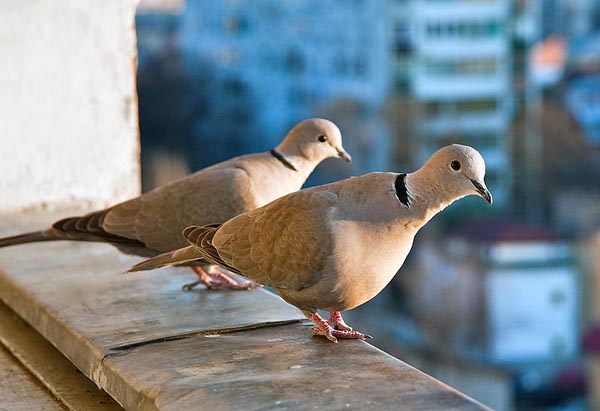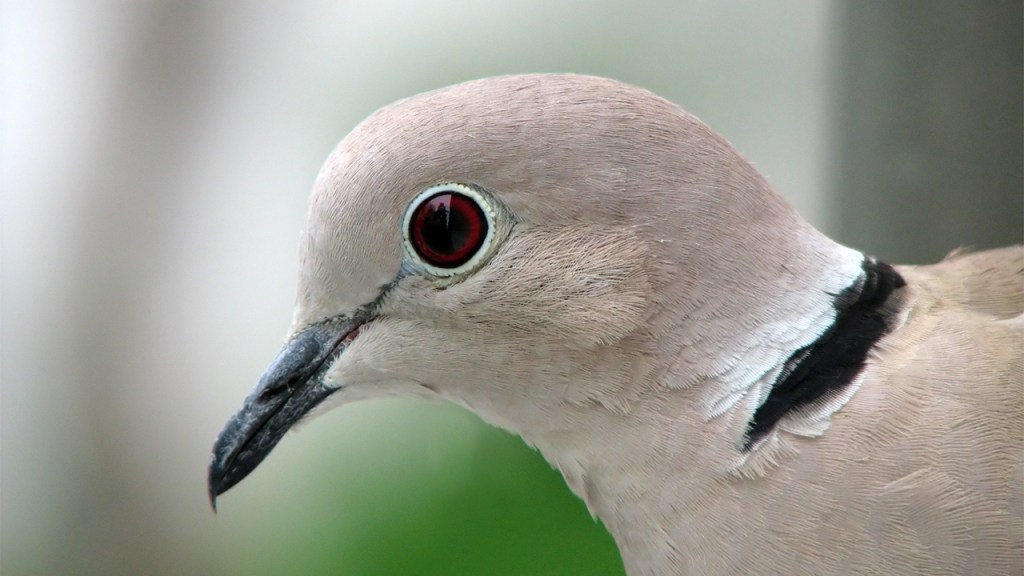The Great Backyard Bird Count (GBBC) — one of the largest citizen science initiatives in the world – annually documents a wide variety of bird population trends.
To my mind, one of the most interesting has been the dramatic spread of the non-native Eurasian collared dove across North America.
The GBBC asks citizen birders to watch an area for at least twenty minutes sometime during a four-day period in mid-February (this year’s count concluded yesterday), and record the birds they see.
Just ten years ago, seeing a Eurasian collared dove would have been a novelty. No more: the doves are now commonly reported by birders in most of the United States.
GBBC data tell the story of this rapid spread.
In the 1970s, the Eurasian collared dove was introduced to the Bahamas. By the early 1980s, the non-native birds made their way to South Florida, where they established populations. Then they began spreading north and west.
Their range appears to have expanded slowly at first. A look at GBBC reports from 1998 show a lot of sightings in Florida, with some birds reported in Texas, Alabama and Arkansas.
By 2001, the doves reached California.
Last year’s bird count results showed the Eurasian collared dove had colonized much of the country. It has not (yet) been reported in New England, but it has reached as far north as Alaska.
The GBBC’s video map dramatically illustrates this expansion.
In my state of Idaho, the doves were first recorded in 2005 by two backyard birders. In subsequent years, the bird was commonly reported in Idaho’s eastern corners. Last year, 132 GBBC participants reported 719 doves throughout the state.
I saw my first Eurasian collared dove in our backyard in 2008 – a banded bird that may have been an escaped pet. Last year, I began seeing the doves hanging around our neighborhood. This year was the first that I noted the species during my own participation in the Great Backyard Bird Count.
What’s going on here? Should conservationists be concerned about this spread?
Unlike some dove species, Eurasian collared doves aren’t migratory. However, they do readily expand into new suitable habitat. In fact, in their native Asia, Eurasian collared doves have been rapidly expanding their range as well – colonizing new countries every year.
The dove is one of those species that adapts well to humanity. The trees, power lines and bird feeders of suburbia provide perfect habitat. The Eurasian collared dove is almost always seen near homes and farms, not unbroken forest or prairie.
Research indicates it is not adversely affecting native mourning doves or other birds. It may simply be filling a new habitat niche created by suburban habitat. But it is still early in the spread.
Could Eurasian collared doves become an invasive threat? That remains to be seen.
Citizen science projects like the GBBC and another citizen initiative, Project FeederWatch, will help scientists continue to track the spread and impacts of the species. It will be interesting to learn what this year’s count found about Eurasian collared doves. If past years are any indication, their populations will likely have grown and spread into new areas of the country.
Have you seen Eurasian collared doves in your area? Have you noted other trends during your backyard bird counts? Let us know what you’re seeing!





You might enjoy this article on the genetic factors of the range expansion http://link.springer.com/article/10.1007%2FBF01651497
We live in Shingle Springs Ca. This is the first year that we have ever seen them and there’s a large flock in her area
I am doing a report on these birds can somebody tell me anything they know bout these gorgeous creatures?
I just saw a Eurasian Collared-Dove at my bird feeder for the very first time ..
A little larger then a Mourning Dove a tad lighter and no spots on back of wings, collared on the nap of the neck… I’m in SWV…
Very pretty Dove …
My son found on of the Eurasian collard doves in on of his chicken pens. Are save to keep for pet?
I have seen them in Salmo, BC for 2,3 years now. Love their sound since it reminds me of home!
I hunt doves quite often so I am very aware of the species. In 2005, my brother and I saw our first pair of Ringneck doves in Mobridge, Sd. Since that time seeing them more and more often. Have witnessed them in Lewiston Mn, Albert Lea Mn, Austin Mn, Blooming Prairie, Mn, Hayfield Mn, Owatonna Mn, and in farmsteads around that whole area. They are very well established in SE Mn. Just saw one in my backyard in Chatfield Mn.
I saw one in the maple tree this afternoon, went indoors to check the bird book for identification, then got my camera out. No bird! After a while a pair flew by to go roost near the ravens, just out of camera range. If the weather doesn’t change too quickly here in Moscow, Idaho then maybe tomorrow …
We have a pair here in Auburn, CA elevation approx. 1,500′ – near Sacramento. The birds do not have the calming cooing that the native dove has.. it is rather harsh to the ears…
nesting outside my kitchen window right now
I have a couple of flocks of the collared doves , one has about fourteen , the other around twenty two with an albino to boot.
I live on Vancouver Island in British Columbia. I first noticed collared doves about 5 or 6 years ago, accompanied 1 year by a pair of Speckled doves. Now the collared doves are plentiful, and lately have been cooing mornings and evenings.
During the Fall of 2012, I observed a “new to me” species of dove at the bird feeder in our backyard I soon identified as the Eurasian Collared dove. Since then, it seems their numbers have increased annually and now they are common and seemingly the most numerous dove in our area of Pullman, Eastern Washington state. Now, I observe fewer and fewer Morning doves that were once more numerous in our area.
Thanks to Matt for the information he provided about the spread of this new-comer to the USA
We live on several acres right in the middle of a small town in Southwestern Idaho. During the past several years, we have surrounded our land with stands of beautiful Ponderosas and poplars. We have many different kinds of birds, including lovely mourning doves. But just within the last two years the Eurasian Dove population has exploded. Although these doves are very pretty, the number of mourning doves has diminished and the white poop from the Eurasians is under every tree in growing abundance. The numbers are now greatly imbalanced.
Is there anything that can be done to curb their growth?
I seen a turtle dove on March 3 2016 under bird feeder.
We live in Freedom WI.